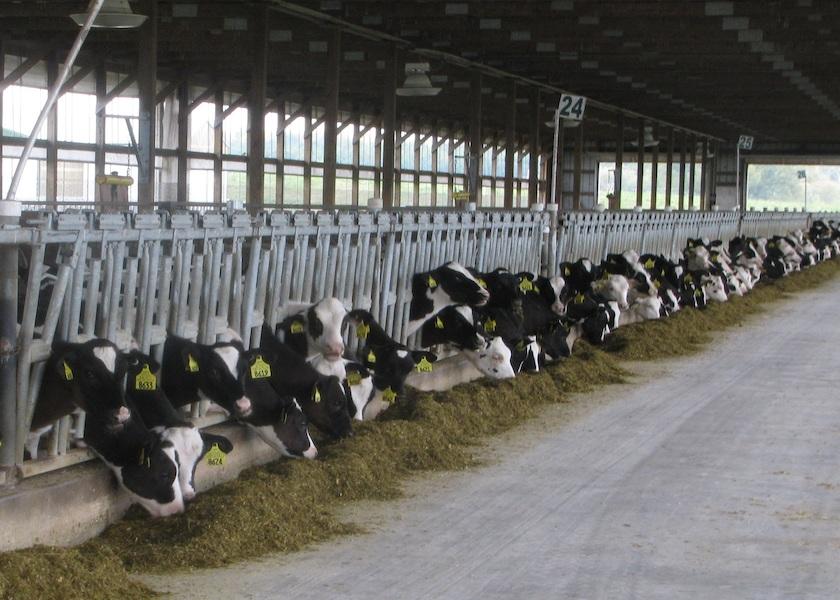Dairy Heifer Supply Tightens

The prevalent question being asked is just how it will be before milk prices increase significantly and move back up to 2022 levels. We did see record milk prices in 2022 and maybe matching those highs might not be feasible, but it would certainly be nice to see price quite a bit higher than they currently are. There are varying ideas as to what it will take to see significantly higher milk prices with most of them feasible to some degree.
Now if we think back to later 2021, culling increased substantially for a few months as low milk prices moved farmers into selling animals aggressively to boost income and reduce the expense of feeding cattle that were not top producers. The milk supply did not tighten to the extent that there was a shortage, but the perception of a shortage is what drove milk prices higher. Buyers of dairy products were concerned about the potential for a tighter supply and wanted to make sure they would have product to fill orders. Thus, a buying frensy took place for a few months which drove milk prices to record highs. The culling slowed down and eventually the concern subsided with cow number remaining below a year ago, but numbers increased from month to month. This took away the concern and milk prices have been lower ever since.
The level of culling has not increased as had been anticipated this time as farmers have been holding onto cows even though cull cow prices have been high. One reason may be due to most of the low producing cows having been culled and what is in the stalls are cows that are too good to cull. Another aspect could be that replacement numbers have tightened and are not as abundant as they had been and what is available is commanding high prices. This brings the industry into a very interesting position. As you can remember what happened after a period when sexed semen became available, it was embraced quickly as farmers always wanted more heifers for replacements. Over time, there was an abundance of heifers resulting in increased cow numbers and higher milk output.
Recently, there has been much interest in beef on dairy. Beef prices were escalating due to heavy culling of the beef head due to drought coupled with strong demand for beef. Dairy farmers found that breeding lower end cows to beef bulls netted huge price benefits for the calves. So, the popularity of beef on dairy grew and remains popular. However, the result is being felt due to tight heifer replacements which may be limiting the amount of culling activity and limiting the ability of some farms to expand. We are now seeing the substantial decline of beef cattle prices and a substantial increase of heifer replacement and cow prices. This will reduce the value of beef on dairy calves over time.
However, it most likely will have an impact on milk prices as replacements will not be as available to take the place of culled cow and milk production will decline. The July Cattle Inventory report already showed the percentage of heifer to milk cows at 38.8% and the lowest ratio since July 1997. The January report may show an even tighter number in comparison to the previous years. This may eventually tighten milk supply resulting in higher milk prices. If, at the same time, demand improves, we could see record prices again as we experienced in 2022. The result of this would again be to breed for heifer calves as they could be worth more than beef calves as farmers want to build heifer inventory. The issue with all of this is that these cycles do not change overnight and will take a few years to turn. Over time, there could be some good milk prices as the market adjusts.
Robin Schmahl is a commodity broker with AgDairy, the dairy division of John Stewart & Associates Inc. (JSA). JSA is a full-service commodity brokerage firm based out of St. Joseph, MO. Robin’s office is located in Elkhart Lake, Wisconsin. Robin may be reached at 877-256-3253 or through the website www.agdairy.com.
The thoughts expressed and the basic data from which they are drawn are believed to be reliable but cannot be guaranteed. Any opinions expressed herein are subject to change without notice. Hypothetical or simulated performance results have certain inherent limitations. Simulated results do not represent actual trading. Simulated trading programs are subject to the benefit of hindsight. No representation is being made that any account will or is likely to achieve profits or losses similar to those shown. There is risk of loss in trading commodity futures and options on futures. It may not be suitable for everyone. This material has been prepared by an employee or agent of JSA and is in the nature of a solicitation. By accepting this communication, you acknowledge and agree that you are not, and will not rely solely on this communication for making trading decisions.







